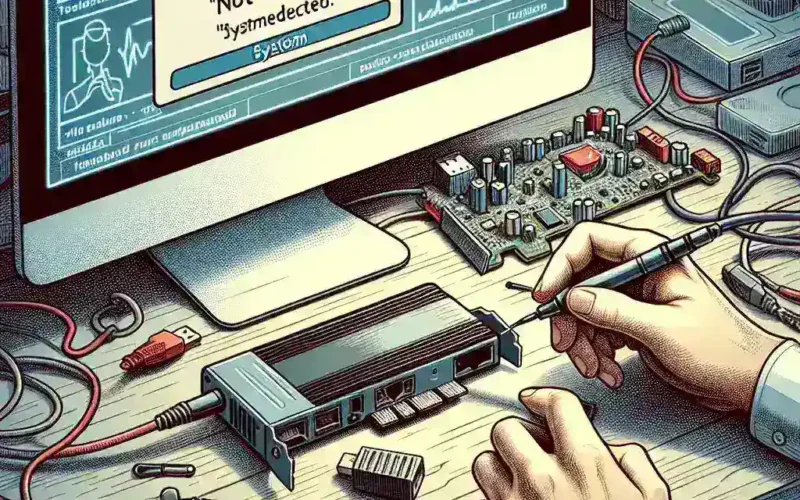A malfunctioning network adapter can disrupt your internet connectivity and hinder your ability to access critical online resources. When your system fails to detect a network adapter, it can be caused by a variety of reasons, ranging from simple driver issues to more complex hardware failures. This article will guide you through the essential steps to troubleshoot and fix a network adapter that is not detected by your system.
Step-by-Step Guide to Fix Network Adapter Issues
Below are the steps you can follow to identify and resolve issues with your network adapter.
| Step | Action |
|---|---|
| 1 | Verify Physical Connections |
| 2 | Check Device Manager |
| 3 | Run Network Troubleshooter |
| 4 | Update or Rollback Network Drivers |
| 5 | Reset Network Settings |
| 6 | Check BIOS/UEFI Settings |
| 7 | Replace Network Adapter |
Verify Physical Connections
The first and simplest step is to ensure that all physical connections are secure. Check the following:
- Ensure the network cable is firmly connected to both the adapter and the router.
- If using a wireless network adapter, make sure it is properly inserted into the USB port or PCI slot.
- Try different cables and ports to rule out faulty hardware.
Check Device Manager
Device Manager in Windows helps you identify hardware issues.
- Press Win + X and select Device Manager.
- Look for the network adapter under Network adapters or Other devices.
- If the adapter has a yellow exclamation mark or is not listed, it indicates a problem.
Steps to Resolve
- Right-click on the network adapter and select Update driver.
- If not listed, choose Scan for hardware changes from the Action menu.
- Reboot your system and check again.
Run Network Troubleshooter
Windows includes built-in troubleshooting tools that can automatically detect and fix network issues.
- Go to Settings > Update & Security > Troubleshoot.
- Select Internet Connections and run the troubleshooter.
- Follow the on-screen instructions to identify and resolve problems.
Update or Rollback Network Drivers
Driver issues are a common cause of network adapter problems. Here’s how to manage them:
- In Device Manager, right-click your network adapter and select Update driver. Choose to search automatically for updated driver software.
- If an update is not available or the issue started after a recent update, try Rolling back the driver to a previous version.
Reset Network Settings
Corrupted network settings can also cause detection issues. Resetting your network settings can help resolve this:
- Open Settings and go to Network & Internet.
- Scroll down and select Network reset.
- Follow the on-screen instructions to reset your network settings and restart your computer.
Check BIOS/UEFI Settings
Sometimes, network adapters can be disabled in the BIOS/UEFI. Here’s how to check:
- Restart your computer and enter the BIOS/UEFI setup (usually by pressing Delete or F2 during boot).
- Navigate to the device configuration or networking section.
- Ensure that the network adapter is enabled.
- Save changes and exit the BIOS/UEFI setup.
Replace Network Adapter
If none of the above steps work, it’s possible that the network adapter is faulty and needs replacement:
- If you are using a removable network adapter, try a different one to see if the system detects it.
- For built-in network adapters, consider installing an external USB network adapter as a quick fix.
In conclusion, a network adapter not being detected by the system can be due to various reasons. Following the steps outlined in this article will help you identify and resolve the issue, restoring your network connectivity.

